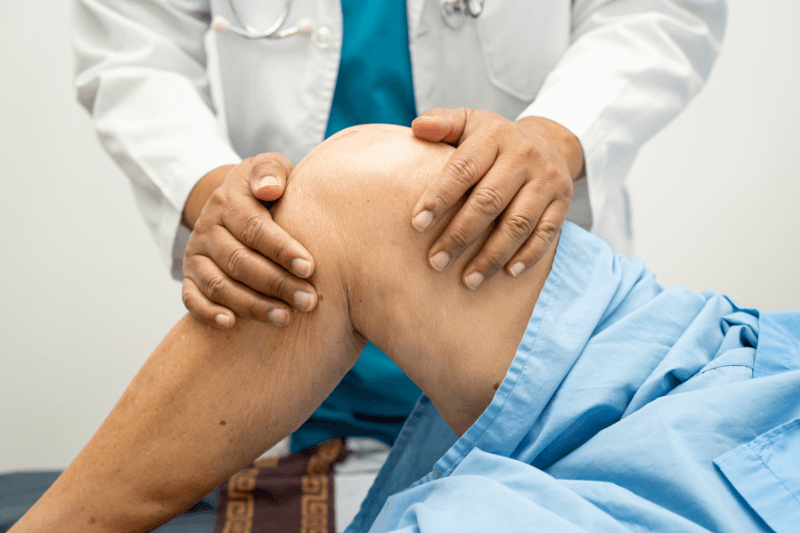
Are you still in pain days or even weeks after getting a cortisone injection? It’s understandable to feel frustrated or discouraged when a treatment doesn’t provide the relief you expected. Many patients go into their appointment hoping for quick results, only to find that the pain lingers or returns sooner than they anticipated. This can leave you questioning whether something went wrong or if cortisone injections simply aren’t effective for your condition.
While cortisone shots can be helpful for reducing inflammation in certain joints, they are not a one-size-fits-all solution. The way your body responds to the injection depends on multiple factors, including the source of your pain, the severity of joint damage, and even how the shot was administered. For some patients, cortisone works as a temporary fix, while for others, it may not provide meaningful relief at all.
Understanding why a cortisone shot may fail—and what options you have beyond cortisone—can make the process far less overwhelming. At Vanguard Spine & Sport in Memorial and Houston Heights, our team takes an integrative, patient-focused approach to diagnosing and treating joint pain. If cortisone injections haven’t worked for you, there are still many other treatments that may help you finally find lasting relief.
What Is a Cortisone Shot?
Cortisone is a synthetic version of cortisol, a hormone naturally produced by your adrenal glands. Rather than working as a painkiller, cortisone reduces inflammation—one of the most common underlying causes of joint pain. When injected directly into an affected joint, such as the knee, hip, or shoulder, cortisone calms inflammation and often provides relief from stiffness, swelling, and discomfort.
How Long Do Cortisone Injections Take to Relieve Joint Pain?
Unlike numbing medications that provide immediate relief, cortisone works gradually. Many injections also contain a small amount of local anesthetic, which may give the impression of instant results. However, the anti-inflammatory effects of cortisone usually take several days to build. Most patients notice improvement within about five days, while those with significant inflammation may need up to two or three weeks to feel full results.
It’s also possible that more than one injection may be recommended, particularly if the joint remains highly inflamed. However, cortisone injections are not a long-term solution and are generally limited due to the cumulative effects of steroids on the body.
Cortisone Shot Side Effects vs. Treatment Failure
Not all pain after a cortisone shot means the injection has failed. Some patients experience what’s called a “cortisone flare”—a temporary increase in pain as the medication crystallizes in the joint. This discomfort usually lasts only a day or two and can be managed with ice and over-the-counter pain relievers. Relief typically follows once the cortisone takes effect.
In rare cases, infection at the injection site may cause pain and swelling. If you notice heat, redness, fluid drainage, or worsening pain around the injection site, contact your provider immediately. While uncommon, infections require prompt treatment with antibiotics.
Why Cortisone Injections Sometimes Don’t Work for Joint Pain
If several weeks have passed and your cortisone injection hasn’t made a difference, there may be a few different reasons for your ongoing pain. One of the most common explanations is that the medication was not delivered to the exact problem area. Cortisone must be injected with precision, often requiring imaging guidance such as x-ray or ultrasound. Without this technology, injections can sometimes miss their mark, which reduces their effectiveness.
Another possibility is that inflammation is not actually the source of your discomfort. Cortisone’s role is to reduce inflammation, but if your pain is caused by something else—such as structural joint damage, nerve irritation, or advanced tissue degeneration—the shot will not provide the relief you were hoping for. In these cases, alternative treatments may be necessary to address the true underlying cause of the problem.
Finally, patients with advanced osteoarthritis often find that cortisone injections offer little benefit. In the late stages of arthritis, when cartilage has worn down almost completely, inflammation is no longer the primary driver of pain. Instead, the pain stems from bone-on-bone contact and joint degeneration, conditions that cortisone cannot effectively treat. For these patients, other treatment options are often more appropriate and may provide longer-lasting relief.
What Are Your Next Options for Joint Pain?
If cortisone injections haven’t helped, you’re not out of options. The next step depends on your diagnosis and the severity of your condition. At Vanguard Spine & Sport, we perform detailed evaluations to determine the underlying cause of your pain and create a plan that may include:
- Hyaluronic acid injections: These injections add lubrication to joints, improving mobility and reducing pain for patients with mild to moderate osteoarthritis.
- Platelet-rich plasma (PRP) therapy: PRP injections use your body’s own growth factors to stimulate healing in damaged tissues, making it an excellent option for patients who want a regenerative, non-surgical solution.
- Chiropractic care and physical therapy: Addressing biomechanics, alignment, and muscle support around the joint through chiropractic adjustments and physical rehabilitation helps reduce stress and prevent worsening degeneration.
- Spinal decompression therapy: For spine-related joint pain, spinal decompression therapy relieves pressure, restores circulation, and promotes healing.
- Surgical evaluation: For patients with severe joint degeneration, surgery may ultimately be the most effective solution. In these cases, injections may provide temporary relief while you prepare for surgery.
Get Expert Joint Pain Treatments in Houston Heights and Memorial
If your cortisone injection didn’t work, don’t lose hope. At Vanguard Spine & Sport, we understand how discouraging it can be when pain persists, and we’re here to provide you with better answers and better care. From PRP therapy and chiropractic adjustments to physical rehabilitation and advanced non-surgical treatments, our team offers comprehensive options designed to help you return to a more active, pain-free life.
Request your appointment today at one of our convenient Houston locations in Memorial or Houston Heights, and let’s find the right solution for your joint pain.

